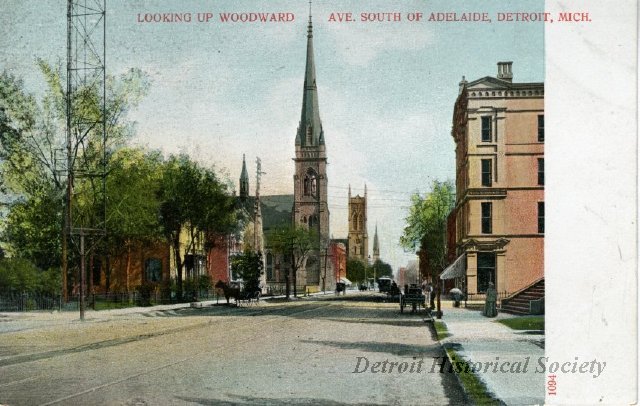Established in 1860, Brush Park is one of the oldest historic neighborhoods in Detroit. Today it encompasses twenty-four blocks, bounded by Mack Avenue on the north, Woodward Avenue on the west, Beaubien Street on the east, and the Fisher Freeway on the south. In the late 1700s, the land was part of a ribbon farm owned by the Askin family, prominent fur traders and British loyalists.
Askin did not approve of American independence, so in 1802 he and his wife moved to Canada, leaving control of the farm and the enslaved people who worked there in the hands of his son-in-law Elijah Brush, husband to Adelaide Askin. Brush was active in civic affairs, serving as the second mayor of Detroit, the Michigan Territory United States Attorney, and Michigan Territory Treasurer. As a lieutenant colonel in the territorial militia, Brush was taken prisoner during the War of 1812 when the British captured Detroit.
Edmund Brush inherited the estate when his father died. He was also an influential figure in Detroit – a volunteer with the fire department and president of the water commission. In the 1850s, Brush began dividing and selling his land to wealthy families. He named the streets Alfred, Adelaide, Edmund, Eliot, and Brush after family members. Brush had many building restrictions, some which required expensive, large homes for the neighborhood, leading Brush Park to be called “Little Paris” for its mansions. Many famous Detroiters lived in the area in the late nineteenth and early twentieth century including Joseph L. Hudson, Albert Kahn and Grace Whitney Evans, daughter of David Whitney.
As the city grew around the neighborhood, the advent of the automobile and streetcars allowed wealthier families to move further away from downtown Detroit, with some relocating to the Boston-Edison and Indian Village neighborhoods. Brush Park became a predominantly Jewish community and many residences were transformed into corner stores and multi-family homes. By the early 1920s, every house in the area had been converted to a rooming house for automobile plant workers, including many African-American families. Brush Park became part of the Black community that included nearby Paradise Valley and Black Bottom. Several historic Black institutions were located in the neighborhood including The Carlton Plaza Hotel, one of the only hotels in Detroit where African Americans could not only stay, but could also attend live jazz performances, and Detroit’s Mercy General Hospital.
In the late 1940s and 50’s most of the original mansions were razed by the City of Detroit for so-called “slum clearance.” By 1960, Brush Park was almost completely abandoned, but the neighborhood has seen profound revitalization beginning at the turn of the last century. Brush Park Historic District was established by the City of Detroit on January 23, 1980.
